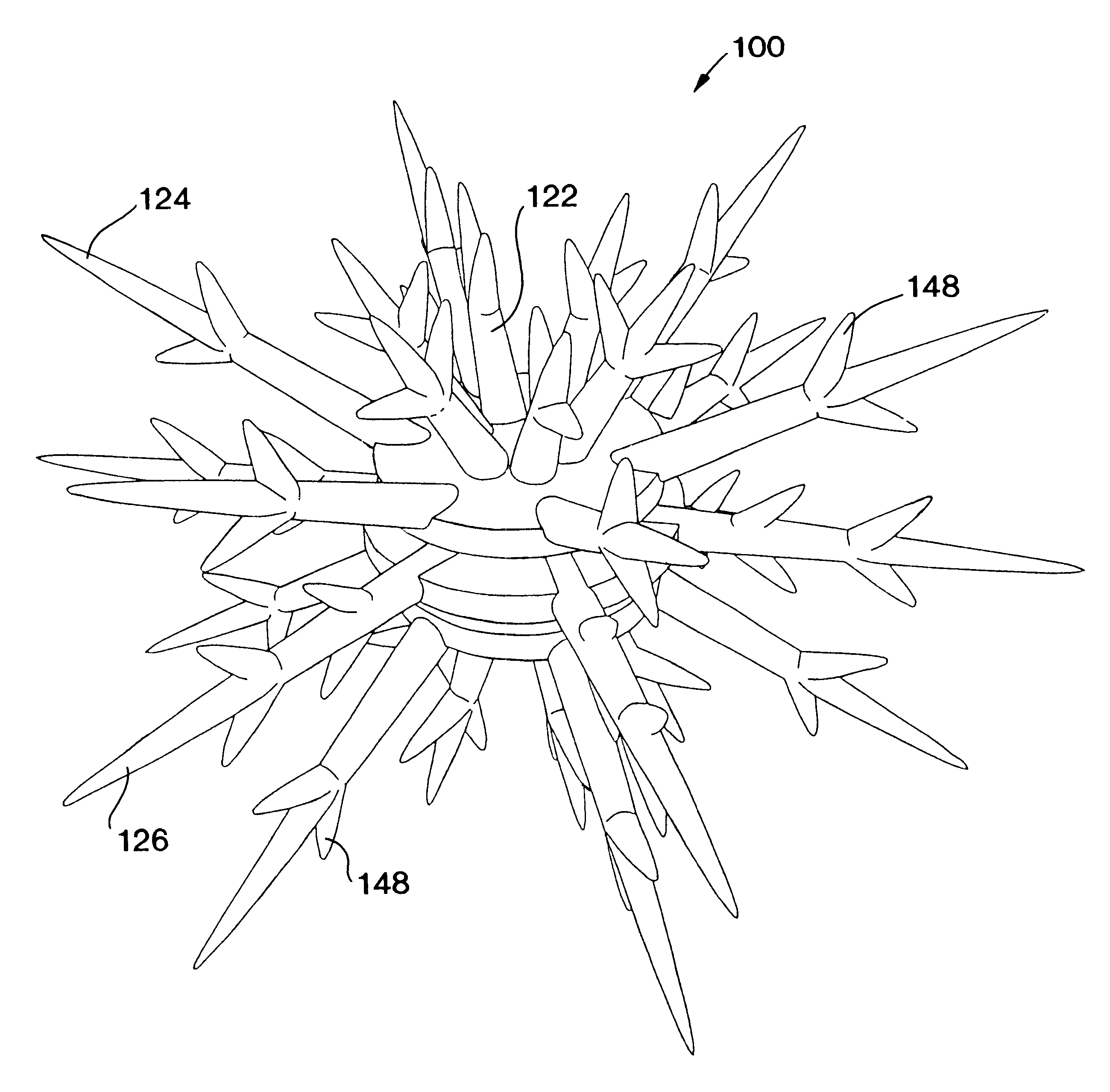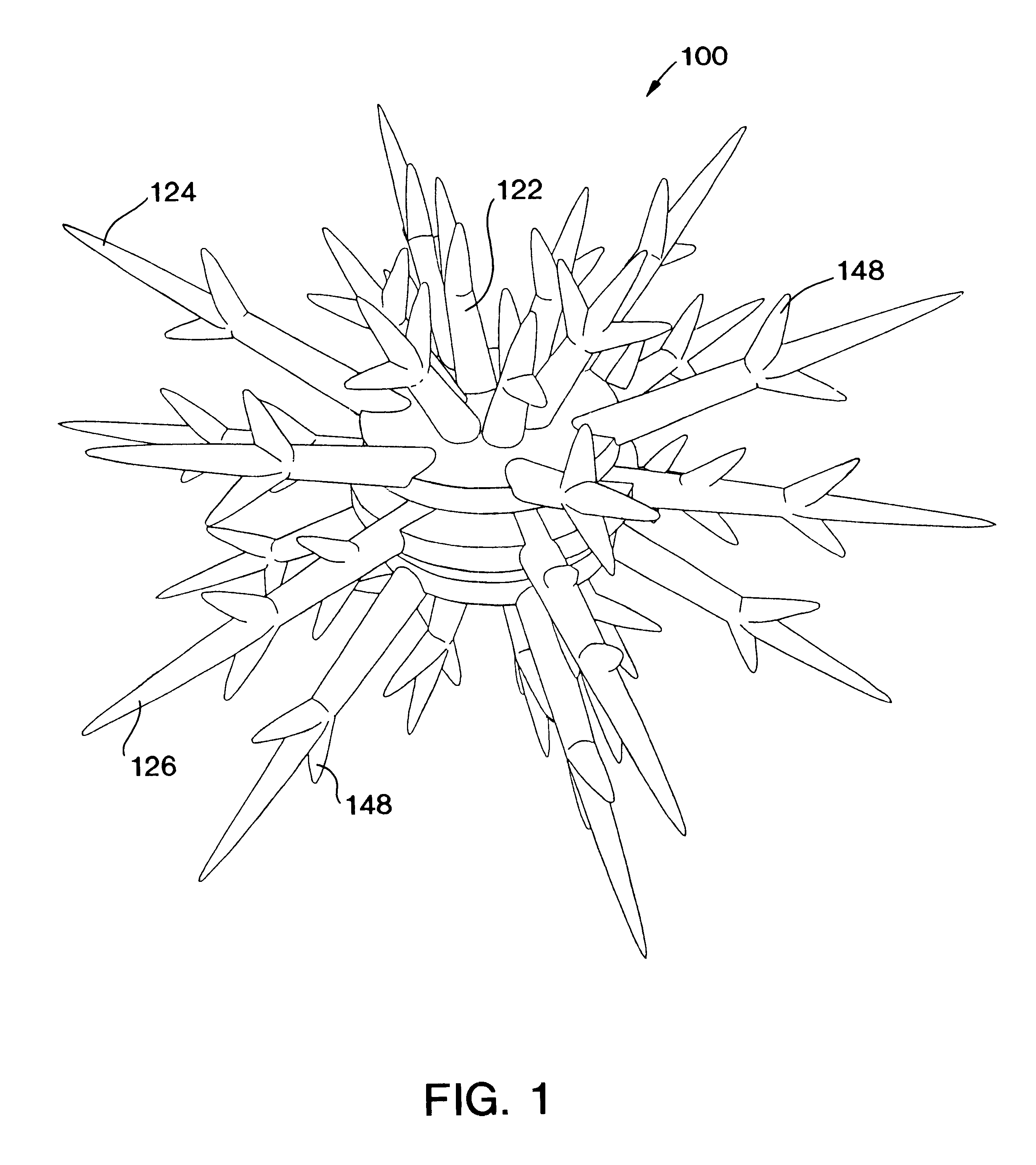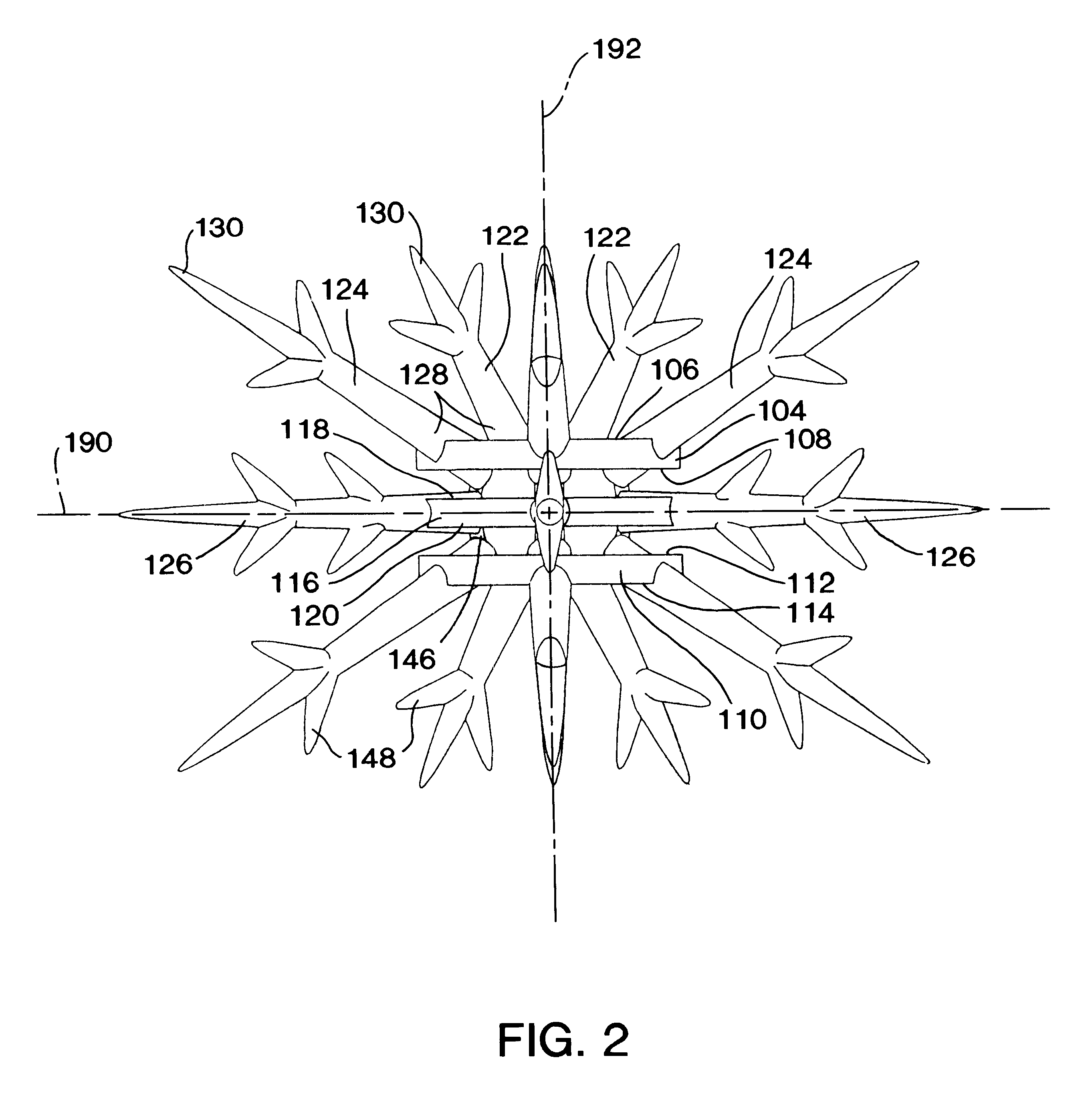Artificial reef module for coral reef remediation
a technology of coral reef and artificial reef, which is applied in the field of artificial reef modules for coral reef remediation, can solve the problems of rapid decline of live coral cover on many of the world's coral reefs, the danger of severe injury or destruction of many coral reefs on earth, and the extremely complex marine ecosystem of coral reefs. it is easy to deploy artificial reef modules in large numbers, and facilitates the reproduction of corals
- Summary
- Abstract
- Description
- Claims
- Application Information
AI Technical Summary
Benefits of technology
Problems solved by technology
Method used
Image
Examples
Embodiment Construction
Referring initially to FIGS. 1 and 2, a preferred embodiment of the Artificial Reef Module For Coral Reef Remediation is shown and generally designated 100. The artificial reef module for coral reef remediation 100 includes a central body 102 having an upper settling plate 104 with an upper surface 106 and a lower surface 108; a lower settling plate 110 with an upper surface 112 and a lower surface 114; and a middle settling plate 116 with an upper surface 118 and a lower surface 120.
Referring now to FIGS. 2 and 3, it is shown that the artificial reef module for coral reef remediation 100 is symmetrical about the horizontal center line 190 and the vertical center line 192. Emanating from the central body 102 is a plurality of supporting tines 122, a plurality of stabilizing tines 124 and a plurality of space filling tines 126. These tines 122, 124, and 126 each have a base 128 and a tip 130. Moreover, these tines 122, 124, and 126 are the primary tines and may be referred to as such...
PUM
 Login to View More
Login to View More Abstract
Description
Claims
Application Information
 Login to View More
Login to View More - R&D
- Intellectual Property
- Life Sciences
- Materials
- Tech Scout
- Unparalleled Data Quality
- Higher Quality Content
- 60% Fewer Hallucinations
Browse by: Latest US Patents, China's latest patents, Technical Efficacy Thesaurus, Application Domain, Technology Topic, Popular Technical Reports.
© 2025 PatSnap. All rights reserved.Legal|Privacy policy|Modern Slavery Act Transparency Statement|Sitemap|About US| Contact US: help@patsnap.com



